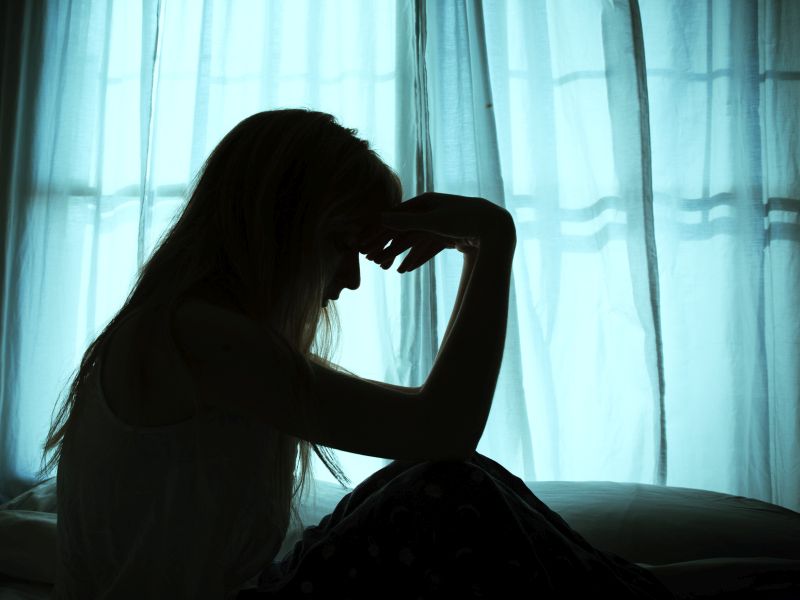
Suicide death rates among 10- to 19-year-old girls have been systematically underestimated, while rates among boys have been overestimated, according to the report published Sept. 13 in JAMA Network Open.
Experts have pegged the male-to-female gender gap in suicide among teens at 3-to-1, but it's really closer to 2-to-1, researchers said.
"The reduced gender gap in suicide is a surprise," said lead researcher Dr. Bin Yu, a doctoral student in epidemiology at the University of Florida. "It is really important that we not underestimate the risk of suicide among girls."
The new model found that suicide deaths among U.S. teens have risen continuously during the past decade, and at a more rapid rate than reflected in earlier estimates, researchers said.
Conventional methods of estimating annual suicide death rates are flawed, Yu said, because they don't take into account the generational risks associated with suicide.
For example, this study showed a decline in suicide risk for millennials born between 1980 and 1995, along with an increase in risk for those born after 1995.
To develop the best possible estimate, Yu and co-author Dr. Xinguang Chen from the UF College of Medicine created a model that combines three factors: a person's age, the year of their birth, and the year in which they died by suicide.
This new way of estimating suicide rates pegged the death rate among boys at 4.9 per 100,000 in 1999 and 8.7 per 100,000 in 2017. Previous estimates placed boys' rates at 7.4 in 1999 and 10.7 in 2017.
Using the new model, suicide rates among girls were 1.7 per 100,000 in 1999 and 4.2 in 2017, compared with earlier estimates of 1.6 in 1999 and 3.5 in 2017.
"The persistent suicide increase we see without a tendency to slow down underscores the need for increased effort at all levels for youth suicide prevention, with a further strengthening of suicide prevention interventions aimed at girls," Yu said.
The new rate model supports other recent studies that have found an increase in suicide among teens, particularly among girls, said Dr. Igor Galynker, director of the Suicide Research and Prevention Laboratory at Mount Sinai in New York City.
"Not only is the suicide rate increasing in the United States, the increase in suicide rate is increasing," he said.
The teenage suicide rate rose roughly 3% a year up to 2014, but since then, it has increased by an average 10% a year, said Galynker, who wasn't part of the new study.
While this new study did not examine possible reasons for the increase, Yu noted that teens born after 1995 have been more heavily exposed to social media and have grown up during the ongoing U.S. opioid epidemic.
Galynker said teens' screen use and the amount of time they spend with social media have both been linked to increased suicide risk.
"These risks are more pronounced for girls than they are for boys," he said. "The data shows that girls' use of social media is more likely to result in interpersonal stress. Compared to boys, girls use social media more frequently, they are more likely to be subjected to cyberbullying, and the cyberbullying is more likely to cause stress and emotional problems in girls than boys. Use of social media is also more likely to result in depression in girls."
Future research should focus on the methods teens use in suicide attempts, Yu said. That knowledge could help prevent future suicides.
The Nemours Foundation lists these warning signs that a teen might be considering suicide:
- Loose talk about suicide, death in general, or hints that they might not be around anymore.
- Expressed feelings of hopelessness or guilt.
- A sense that they are withdrawing from friends or family.
- Giving away treasured possessions to siblings or friends.
- No desire to take part in their favorite activities.
- Changes in eating or sleeping habits.
A parent who thinks their teen is in immediate danger should call 911 or a suicide hotline number, such as the National Suicide Prevention Lifeline at 800-273-TALK (800-273-8255).
Sources: Bin Yu, M.D., M.P.H., doctoral student, epidemiology, University of Florida, Colleges of Medicine and Public Health and Health Professions, Gainesville; Igor Galynker, M.D., director, Suicide Research and Prevention Laboratory at Mount Sinai, New York City; JAMA Network Open, Sept. 13, 2019.







0 Comments